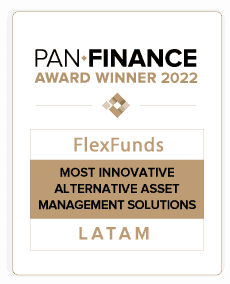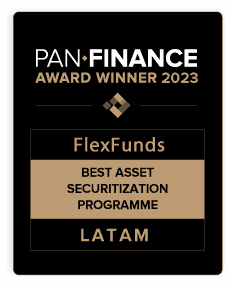- In this article, we explain how, in the future, asset management will be a combination of collective investment vehicles with separately managed accounts, according to data from the II Annual Report of the Asset Securitization Sector 2024-2025, developed by FlexFunds in collaboration with Funds Society.
- This information is intended for fund managers and investment advisors who want to understand the pros and cons of collective investment and separately managed accounts.
- At FlexFunds, we provide asset securitization solutions to issue exchange-traded products (ETPs) that can facilitate capital raising on international private banking platforms. For more information, feel free to contact our team of experts.
In the asset management industry, two distinct approaches to investment management coexist. One is collective investment, which includes exchange-traded funds (ETFs), private equity funds, hedge funds, etc. The other consists of separately managed accounts (SMAs), where individual investments are made based on the client’s risk profile and objectives.
Download our infographic
Main advantages
Each area currently has its own market because both offer different advantages:
For example, SMAs provide greater customization, flexibility, and transparency, which can attract more sophisticated investors with larger wealth. Factors like risk tolerance, tax objectives, and asset preferences are considered.
On the other hand, collective investment vehicles offer immediate access to broad diversification, as investor contributions are distributed among a wide range of assets. Additionally, economies of scale can reduce operating and transaction costs.
Key disadvantages
However, both also come with drawbacks:
The main disadvantage of collective investment funds is the lack of personalization: all fund subscribers have the same portfolio, regardless of their individual goals or risk tolerance. A typical case includes mutual funds or ETFs.
Meanwhile, SMAs can present an administrative and back-office burden for managers, and investors may face limited options due to minimum ticket requirements.
Table 1: Key differences between SMAs and collective investment vehicles
A mixed future
For these reasons, experts believe that the asset management industry could evolve toward a mixed model that takes advantage of the benefits of both collective investment and SMAs, while compensating for their drawbacks.
This conclusion comes from the II Annual Report of the Asset Securitization Sector 2024-2025, in which experts from 100 financial companies across 18 countries participated.
Specifically, 19% of asset managers believe that the future model will be dominated by separately managed accounts, while 36% think the path will continue toward collective investment vehicles (CIV). However, the majority, 37%, expect a move toward a mixed system.
“The growing focus is expected to be on hybrid solutions that integrate the best features of both models. For instance, some portfolio managers may offer SMA services within a collective vehicle structure, providing both customization and the benefits of diversification and economies of scale,” the report noted.
Regarding the preferences of asset managers surveyed by FlexFunds, most (56%) have experience managing collective investment vehicles. It was concluded that 69% favor a mixed model, while 14% choose only collective investment vehicles.
Figure 1: Expected evolution of collective investment vehicles
The II Annual Report of the Asset Securitization Sector 2024-2025 suggests that asset managers face a variety of challenges in raising capital and acquiring clients, which could influence the choice between mixed investment models or those exclusively based on collective investment vehicles.
The reason is that mixed models can provide the flexibility needed to adapt to market uncertainty and widespread fear, while collective investment vehicles can target a more specific and structured strategy.
“The results of the study highlight that both SMAs and collective investment vehicles (CIVs) will play a key role in asset management. The former will focus on investors seeking tailored solutions and direct ownership of their subscriptions, while the latter will be an essential mechanism for those seeking diversified alternatives with more efficient costs.” summarized the specialists in charge of the report.
It’s worth remembering that the II Annual Report of the Asset Securitization Sector 2024-2025 by FlexFunds can be easily downloaded for free with just a few clicks.







